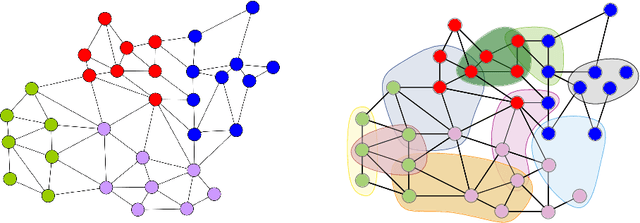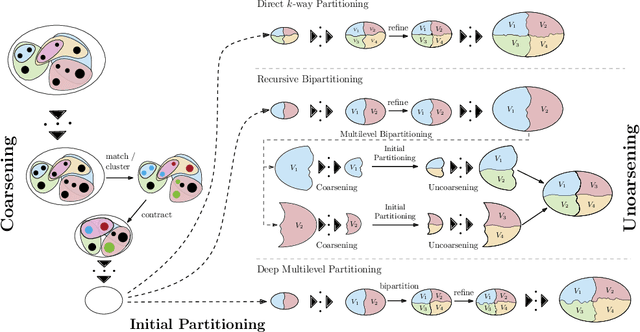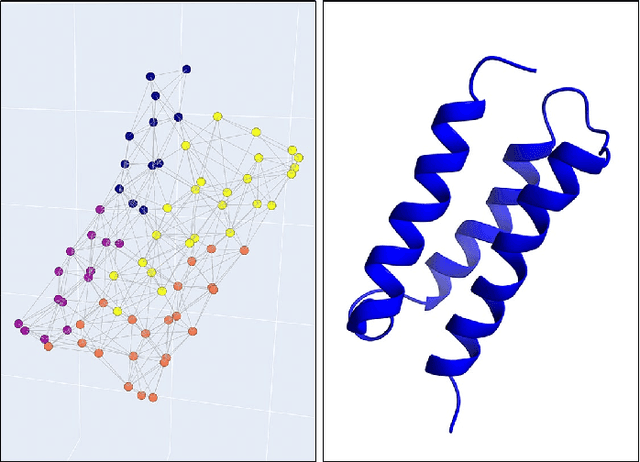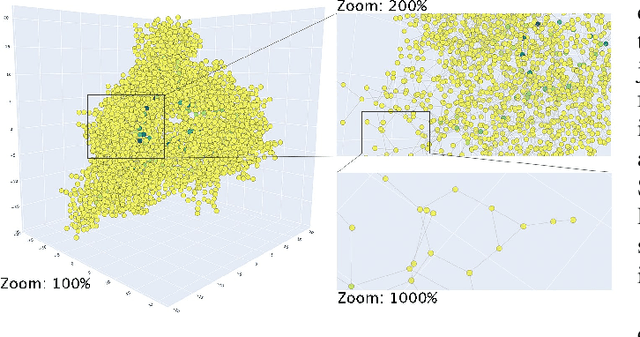Henning Meyerhenke
More Recent Advances in (Hyper)Graph Partitioning
May 28, 2022



Abstract:In recent years, significant advances have been made in the design and evaluation of balanced (hyper)graph partitioning algorithms. We survey trends of the last decade in practical algorithms for balanced (hyper)graph partitioning together with future research directions. Our work serves as an update to a previous survey on the topic. In particular, the survey extends the previous survey by also covering hypergraph partitioning and streaming algorithms, and has an additional focus on parallel algorithms.
Interactive Visualization of Protein RINs using NetworKit in the Cloud
Mar 02, 2022



Abstract:Network analysis has been applied in diverse application domains. In this paper, we consider an example from protein dynamics, specifically residue interaction networks (RINs). In this context, we use NetworKit -- an established package for network analysis -- to build a cloud-based environment that enables domain scientists to run their visualization and analysis workflows on large compute servers, without requiring extensive programming and/or system administration knowledge. To demonstrate the versatility of this approach, we use it to build a custom Jupyter-based widget for RIN visualization. In contrast to existing RIN visualization approaches, our widget can easily be customized through simple modifications of Python code, while both supporting a good feature set and providing near real-time speed. It is also easily integrated into analysis pipelines (e.g., that use Python to feed RIN data into downstream machine learning tasks).
Parallel Graph Partitioning for Complex Networks
Jan 26, 2015



Abstract:Processing large complex networks like social networks or web graphs has recently attracted considerable interest. In order to do this in parallel, we need to partition them into pieces of about equal size. Unfortunately, previous parallel graph partitioners originally developed for more regular mesh-like networks do not work well for these networks. This paper addresses this problem by parallelizing and adapting the label propagation technique originally developed for graph clustering. By introducing size constraints, label propagation becomes applicable for both the coarsening and the refinement phase of multilevel graph partitioning. We obtain very high quality by applying a highly parallel evolutionary algorithm to the coarsened graph. The resulting system is both more scalable and achieves higher quality than state-of-the-art systems like ParMetis or PT-Scotch. For large complex networks the performance differences are very big. For example, our algorithm can partition a web graph with 3.3 billion edges in less than sixteen seconds using 512 cores of a high performance cluster while producing a high quality partition -- none of the competing systems can handle this graph on our system.
 Add to Chrome
Add to Chrome Add to Firefox
Add to Firefox Add to Edge
Add to Edge